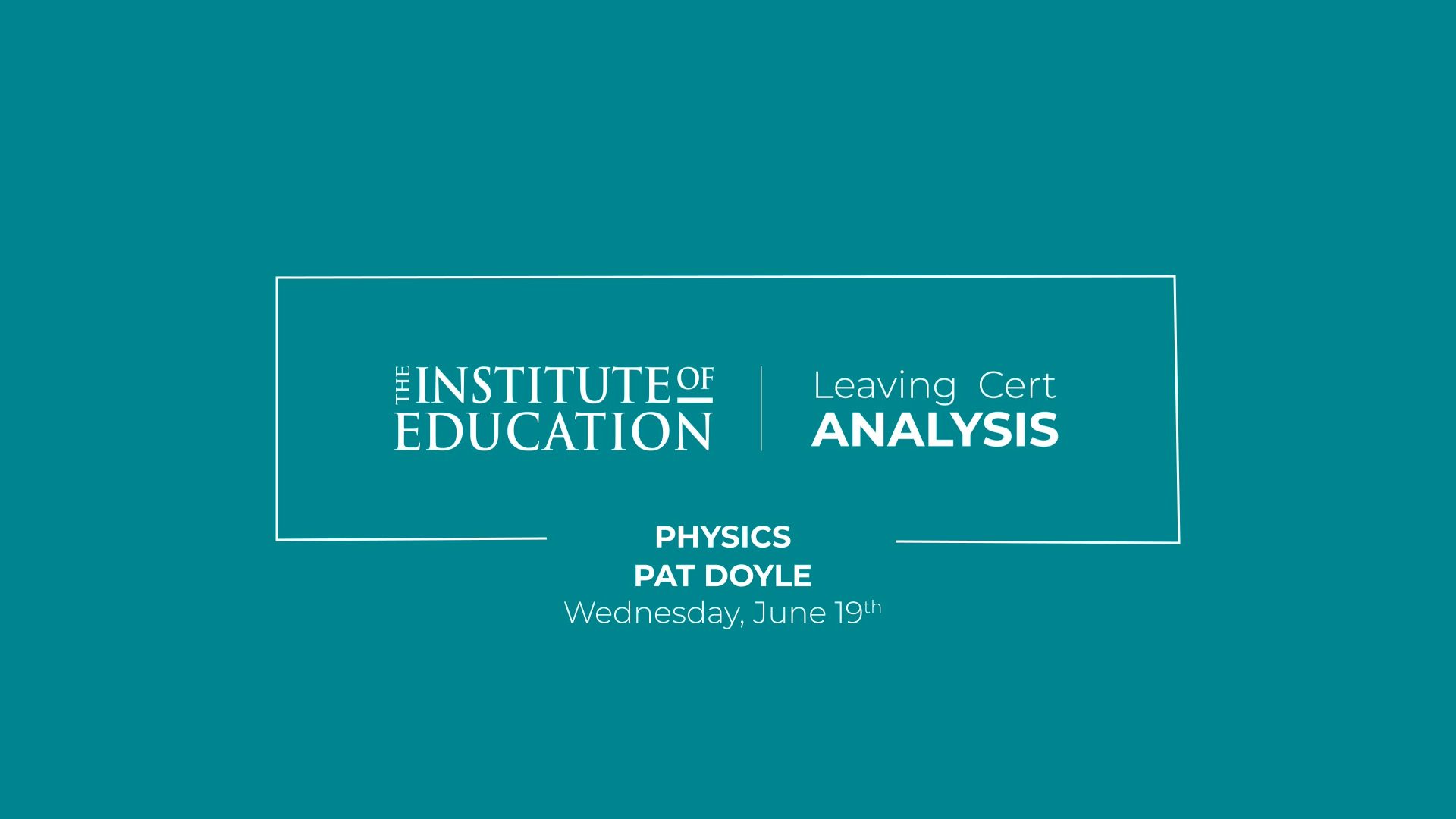Reaction to 2024 Leaving Certificate Physics (Higher Level) by Pat Doyle, Physics teacher at The Institute of Education.
- A rewarding paper for those who were rigorous in their revision and did a deep dive into past papers.
- Students will feel that no work was wasted as wide-ranging questions encompassed the whole course.
This was a very matter-of-fact paper for a matter-of-fact subject that has remained consistent since 2002. The core of the paper were concepts, skills and questions that will have been studied, prepared and revised numerous times over Senior Cycle. As such, for those students who really connected with the subject this paper will represent a logical conclusion to their work to date. This does not mean that there were not minor surprises, variation or even moments of colour on the paper but ample choice will ensure that students of every level had a fair opportunity to reflect their ability.
Section A examined experiments with the five questions drawing from all five relevant parts of the course. This was more comprehensive than previous years, as normally one part appears twice at the exclusion of another. If students did the work, they could present it without restriction on choices.
Section B opens with Question 6, a collection of short questions that is often popular with students. However, this year the selection may have put some students off. The questions were more searching and challenging than might have been anticipated. While there were lots of other viable questions to replace it, some may have reevaluated their planned route through the paper. Many will be pleased with Question 7 on Mechanics as it was much more fairly formulated for students of Physics only. In previous years an overlap with the Applied Maths course meant that this question favoured that particular combination of subjects, but that was not present here. Question 8 had the slightly unusual combination of Magnetism and Sound, but each were kept distinct with only a passing bridging reference so as not to muddle the concepts. While the substance of the question was familiar, the initial framing might have caused a moment of pause as the mention of a “moving coil speaker” will be unfamiliar. That type of speaker is not actually part of the main course, but its inclusion was only part of the question’s framing, not the actual material examined. Questions 9 and 10 will be pleasing as they were unambiguous presentations of well-trodden material. The latter on Modern Physics is a solid strategic choice for students as it is a staple of the exam.
Question 11 will have been tricky for many students, but only if they are meeting it for the first time. The wording of the question might entangle those navigating it while the exam hall clock ticks. However, if you had delved deep into the past papers you would have found a nearly identical question from 2004. If you had worked through this in the calm of classroom with a teacher, then this was just a replay. Latter questions added interesting colour to the material, particularly 12 (B) and 13 which reference Irish scientists Callan and Tyndall respectively. It is nice to see a spotlight being given to less well-represented Irish Physicists of the 19th century. This sense of connection with different time periods was also represented in the mentions of the television show “Ireland’s Fittest Family” and the cathode ray tube, a device responsible for the depth of older television sets before being replaced by flatscreens.
Ultimately, this paper was in keeping with what students would have expected and studied for. Students leaving the exam hall should feel confident that they have a solid grasp on their performances.

